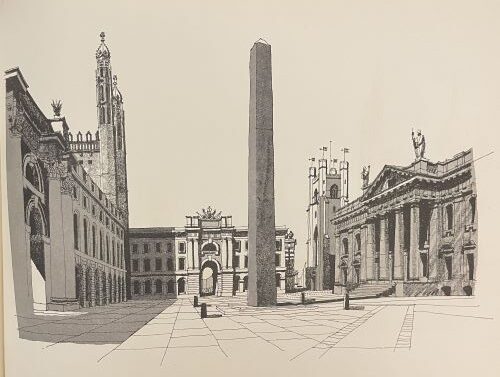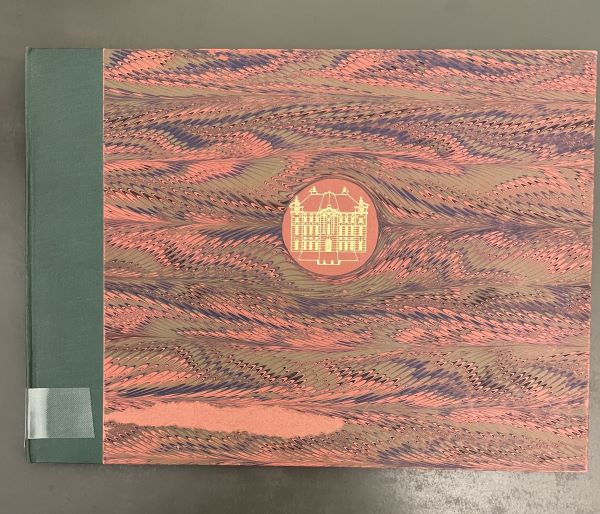Let’s face it, Christmas sneaks up on the best of us. If you’re still hunting for the perfect present, why not go for a book? They’re a dream to wrap (no awkward shapes here!) and always make you look thoughtful. Plus, there’s something special about giving a book.
Cambridge Christmas Books: A gift for the printer who has everything
Posted:
04 Dec 2024
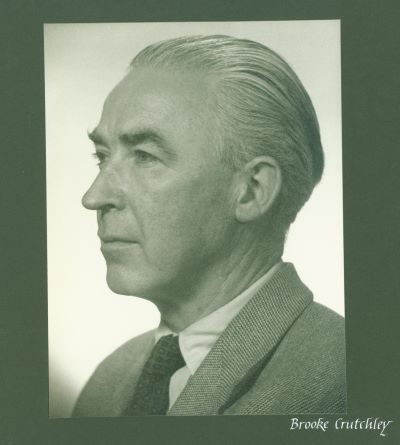
Among the treasures in our special collections are the Cambridge Christmas Books—a series of finely crafted short publications produced as gifts for “friends in printing and publishing”. The tradition was started in 1930, by Walter Lewis (1878–1960), printer to the University of Cambridge. These annual keepsakes were designed to show off the skill and artistry of the Press, giving each book the format and typography which best suited its contents.
Though paused during World War II, the tradition was revived in 1947 by Lewis’ successor, Brooke Crutchley (1907–2003). Crutchley studied Classics and English at Trinity Hall from 1926 to 1929. He then started out at the Press in 1930 as Assistant to Walter Lewis. In 1946, following Lewis’s retirement, Crutchley was appointed University Printer. He remained in this role for 28 years, retiring in 1973. Unusually, despite not being an academic, he was made a Fellow of his former College in 1951. He was later appointed as its Vice Master from 1966 until 1970.
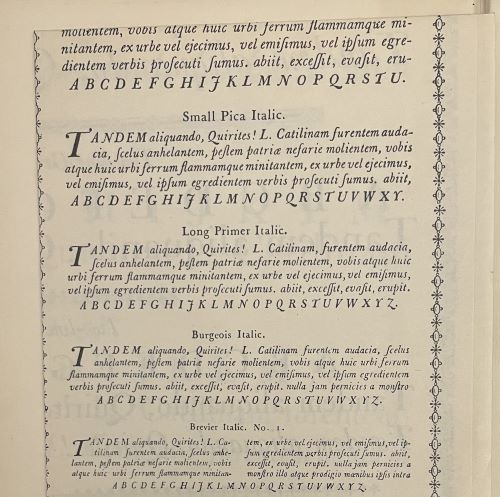
Despite their festive timing, the Christmas books weren’t about snowmen or Santa Claus. Instead, they covered a variety of topics, frequently related to printing and publishing. Produced with meticulous attention to detail, prominent artists including Edward Ardizzone, David Gentleman, and Lynton Lamb added their artistic flair.
Among the most notable editions (at least for printing nerds) was A Tally of Types (1953) [1], authored by Stanley Morison at Crutchley’s request. This book chronicled the development of the Monotype typesetting system, showcasing the Press’s pivotal role in advancing printing technology.
Some books were prompted by current events. The story of how Baskerville’s punches was uncovered and acquired by type historian John Dreyfus after nearly 180 years in France, is celebrated in the 1949 Christmas book The Survival of Baskerville’s Punches. [2]
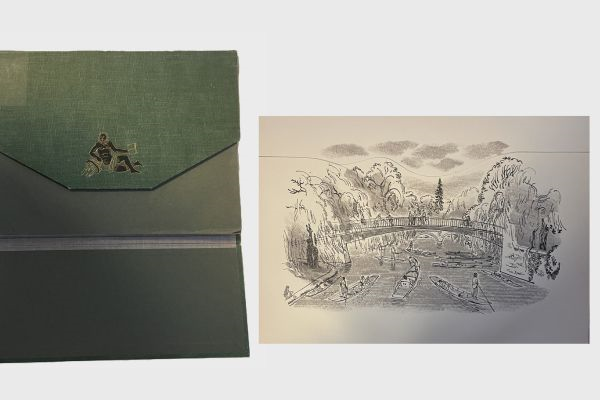
The 1961 book Bridges on the Backs, [3] illustrated by David Gentleman, marked the building of two shiny new Cambridge bridges – one on Silver Street (1959) and the other on Garrett Hostel Lane (1960). It includes interactive “lift-the-flap” illustrations that reveal the changes in these structures over time.
Another book with a Cambridge focus is the 1955 book: The Town of Cambridge as it ought to be Reformed. [4] This discusses the architect Nicholas Hawksmoor’s (c1661-1736) plans to re-envision the City, which he probably produced for fun. We particularly like how he turned Cambridge streets into Italian-style piazzas. The red blob in the marbled cover paper (shown left) was created by stopping the marbling with the innovative use of a drop of ox-blood.
The Cambridge Christmas Books were printed in limited editions, typically between 100 and 500 copies, and distributed as gifts rather than sold. At the time they must have delighted many of their lucky recipients, while today they are collector’s items. Crutchley himself, lamented their status as collectibles:
“…it saddens me a little that now they are regarded (and collected) as a series rather than being valued on their individual merits.” (To Be a Printer, p. 127).
[5]
Trinity Hall is lucky to have all of the Christmas books printed by Crutchley, many of which bear his personal bookplate. Ten of these books were personally selected by him to give to the College when he retired. The remaining volumes in the series were generously bequeathed by Trinity Hall alumnus Lawrence Strangman (1907-1998), which completed our collection.
The gifting of Cambridge Christmas books sadly came to an end with Crutchley’s retirement in 1973. His successor, Euan Phillips, cited the challenges of continuing such an endeavour in a competitive era:
“It had become increasingly difficult … to justify the expenditure of the time, skill and resources.” (Tributes to Brooke Crutchley, 1974).[6]
So, as Christmas rolls around, take a moment to appreciate the timeless charm of books. Whether it’s a beautifully crafted keepsake or a well-loved novel, there’s no better way to spread a little festive cheer.
Wishing you a Merry Christmas and a very happy 2025!
References
[1] Morison, Stanley. A Tally of Types : Cut for Machine Composition and Introduced at the University Press, Cambridge, 1922-1932. Cambridge: Privately printed, 1953. Strangman Collection 686.2 MOR (LV)
[2] Dreyfus, John. The Survival of Baskerville’s Punches. 1949. Cambridge: Privately Printed by the University Printer for Friends in Printing & Publishing, 1949. TH.C.4.4
[3] Gentleman, David. Bridges on the Backs : A Series of Drawings. Cambridge: B. Crutchley, 1961. TH.C.4.15
[4] Roberts, David. The Town of Cambridge as it ought to be Reformed : the Plan of Nicholas Hawksmoor Interpreted in an Essay. Privately Printed at the University Press, Cambridge. 1955. TH.C.4.10
[5] Crutchley, Brooke. To Be a Printer. London: Bodley Head, 1980.
[6] Phillips, Euan. Tributes to Brooke Crutchley on His Retirement as University Printer. Cambridge: University Printing House, 1975.
